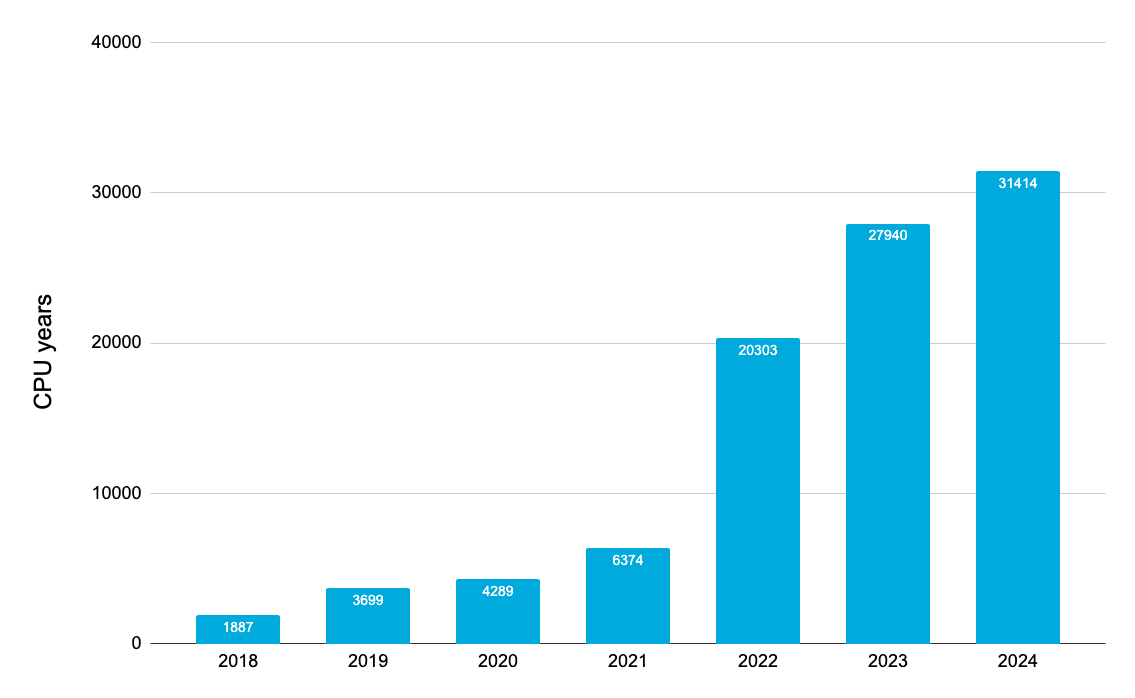About
The HPC Centre’s infrastructure is built to deliver powerful, flexible computing capabilities. Our facility houses two primary clusters, designed to accommodate a broad range of research requirements, from high-throughput computing to large-scale simulations. With robust storage and diverse processing architectures, our infrastructure is optimized for scalability, efficiency, and reliability. Our clusters offer an integrated platform for researchers across fields, allowing them to process vast datasets and run complex models at exceptional speeds. This setup not only meets current needs but also adapts to evolving research demands, providing a foundation for the university’s continued leadership in HPC.
Key figures in 2024
The University of Luxembourg operates two primary high-performance computing (HPC) clusters: Iris and Aion. Iris, established in 2017, comprises 442 nodes with a total of 12,000 cores, delivering a peak performance of 456 teraflops. It features a high-speed InfiniBand interconnect and is optimized for a broad range of scientific computations. Aion, inaugurated in 2021, consists of 318 nodes equipped with AMD EPYC processors, totaling 40,704 cores, and achieves a peak performance of 1.8 petaflops. This cluster is designed for large-scale simulations and data-intensive applications, offering enhanced computational power and energy efficiency.
In addition to the two primary clusters, the HPC Platform teams manage smaller scale but less traditional machines for specific research needs: a Graphcore IPU node and a set of recent AMD GPU nodes which will soon be accessible via the SLICES/Grid5K research platform.

In 2024, the usage of the University of Luxembourg’s High Performance Computing (ULHPC) clusters surged to an impressive 31,400 CPU years of computation, equivalent to approximately 31.4 millennia of uninterrupted processing power—a testament to the growing demand for advanced computational resources in research and innovation.
N.B.: A CPU year is the work of one CPU core running continuously for a year, used to measure computational capacity and usage.